| Rozz™ Chess |
|
TABLE OF CONTENTS
Rozz Chess is a Rozz scenario designed for playing Rozz on a chessboard, using chess pieces. As such, it is an unusual chess variant because both players move at the same time.
As with normal chess, the Rozz variant requires good planning and strategy. But while normal chess depends on tactics and calculation, Rozz is more a game of anticipation and prediction. The board is set up with a normal chess starting position. There are no purchases: these are the pieces you have to work with. 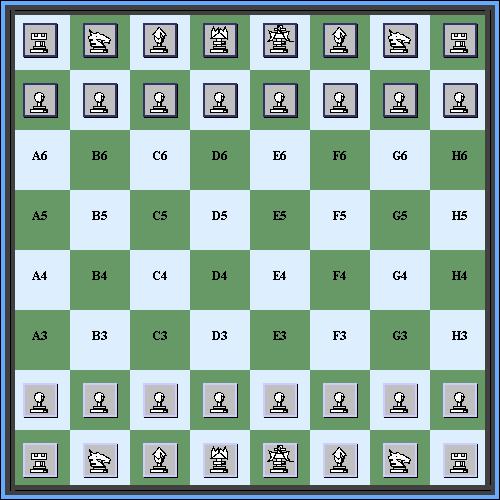
In Rozz, both players prepare commands (moves and strikes) at the same time, so it is impossible to retain the normal chess mechanics where the side with the move lands a piece on another square and captures whatever's sitting there.
Instead, two pieces could move to the same square at the same time, so we need to know how that's resolved (what kills what). As much as possible, we tried to keep chess-like flavor. Here are the pieces and their capabilities: THE KING
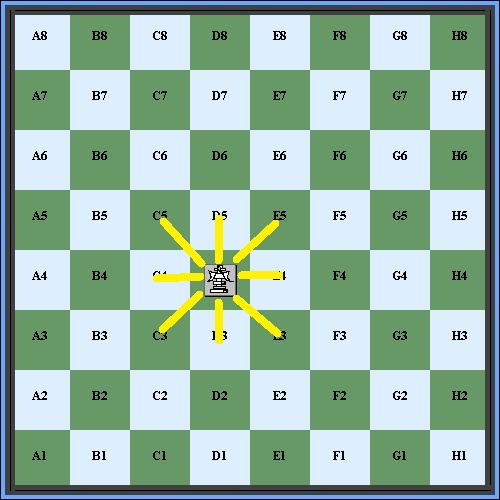
THE PAWN
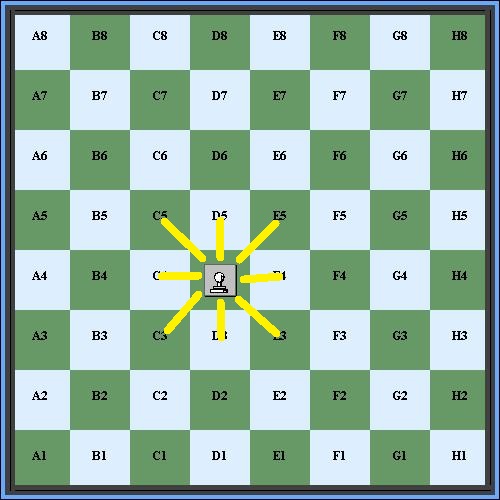
THE KNIGHT

THE BISHOP
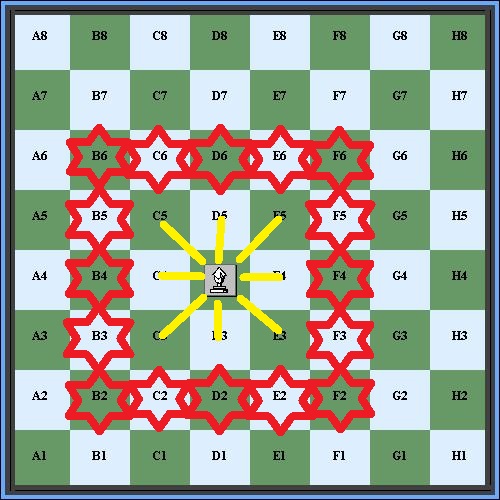
THE ROOK
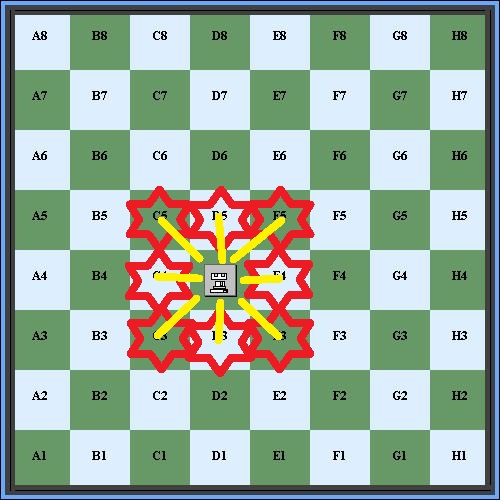
THE QUEEN
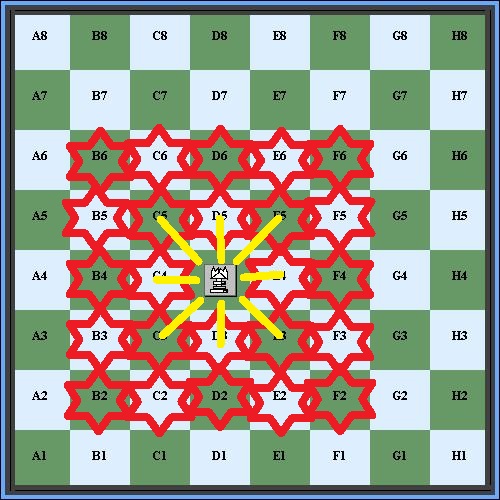
Commands are prepared as in a normal game of Rozz, except that there is nothing to purchase.
Each player prepares two commands each round, and these can be either moves or strikes (or do nothing). As in normal Rozz, moves come before strikes. A queen at D4 could move to E5 and strike G7: You can move and strike with the same piece, but you cannot move the same piece twice. You CAN move one piece and strike with a different piece. 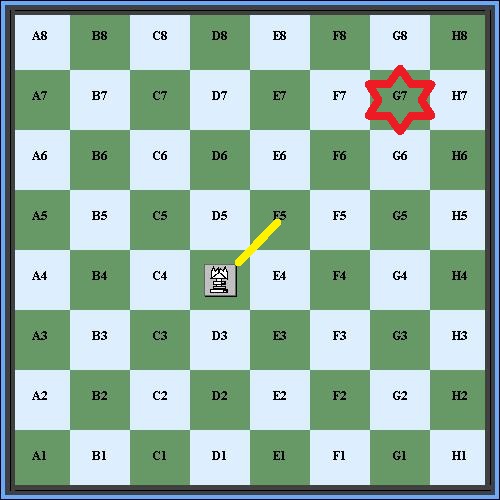
There are a couple of things in Rozz Chess that differ from standard Rozz scenarios:
Rozz Chess is a new scenario for Rozz, and an entirely new variant for chess, so it's fertile ground for exploring opening ideas.
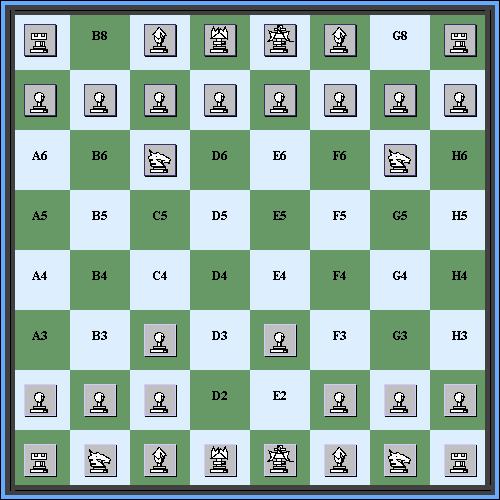
Here WHITE plays: D2 -> C3; E2 -> E3
And BLACK plays: B8 -> C6; G8 -> G6
In general, you could have an aggressive plan or a more defensive plan. You can go for a quick attack and dance around your opponent's predictions, hang back and maneuver for position, or something in between.
After even two rounds things can start looking annoying.
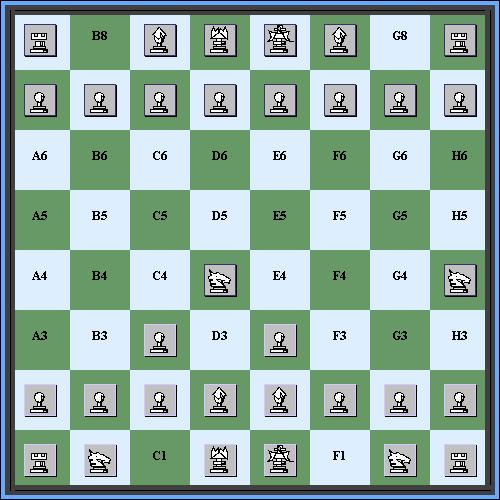
This board, with Black's aggressive knights at D4 and H4, is resulting from:
ROUND 1
The knight at D4 is attacking the bishops at D2 and E2, and is also threatening to move into attack range on the king at F3. The knight at H4 is threatening to move into attack range on the king at F3. For the next round, White would have to weigh these possibilities and try to predict what his (or her) opponent might play. Covering the F3 square could be handled in a number of ways:
E3 -> F3, or F2 -> F3, or G2 -> F3, or D2 STRIKES F3, or D1 STRIKES F3, or G1 -> F3 (a trade of knights)
Or, using both commands, preserving a bishop with something like:
WHITE: E2 -> D3; D1 STRIKES F3
Black, for his part, might anticipate White's reaction and instead maneuver provocatively:
BLACK: D4 -> B3; H4 -> F5
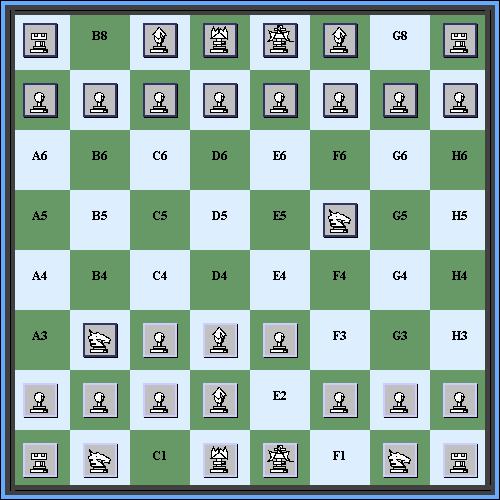
The knight at B3 is now attacking the bishops at D2 and D3, and is threatening to move into attack range on the king at C1. The knight at F5 is attacking the bishop at D3, and also threatening to move into attack range on the king at F3 or G3. Success in the middle game can swing wildly depending on accuracy of your predictions, but in general it is good strategy to POSE MULTIPLE THREATS so that it is harder to predict what you might do.
It is worth considering conditions where you might actually force a win. Consider the following board:
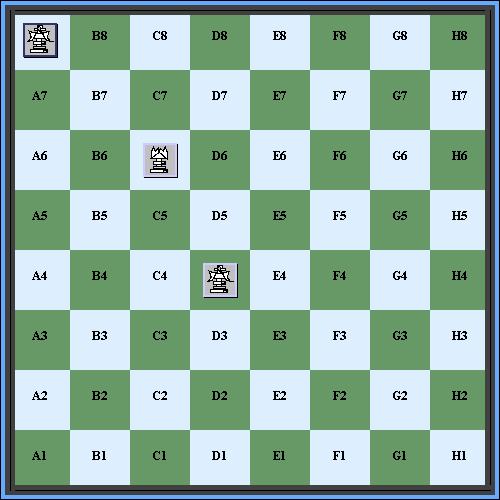
White's queen can strike any of the squares A7, A8, B7, B8, and can also approach closer to B7. Let's say that White prepares the commands:
WHITE: C6 -> B7; S: B7 -> A7
Black had a 33% chance of getting killed, choosing between staying still at A8, moving to A7, or moving to B8. Let's say he chose B8: 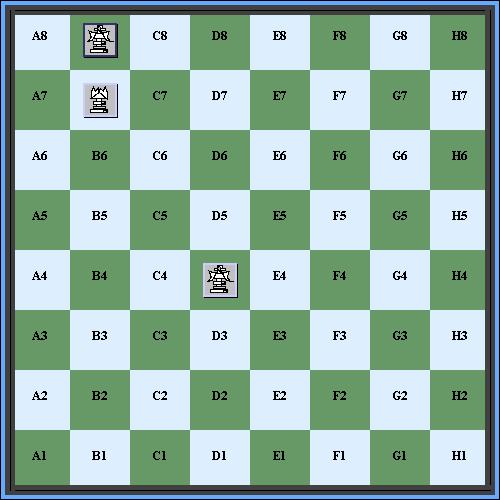
Now again, White's queen can strike any square the king might occupy, and can also stay still or move to intercept him. Each round, there would be a chance of catching him, but a secondary factor comes into play: if Black's king can collide with White's king, he can draw the game. As a result, White's temptation is prevent Black's king from moving to C7, and also to expect that it wants to head to C7. Prediction is no longer simply a mathematical percentage. Is your opponent the sort of person who will head blindly to C7? Or, knowing that you are likely to cover C7, to choose an alternate square? Or, knowing that you guess he will choose an alternate square, to choose C7? The entire game is one of anticipation, but this example demonstrates that even a lone king might survive an attack from a sole queen. What if White had another piece? 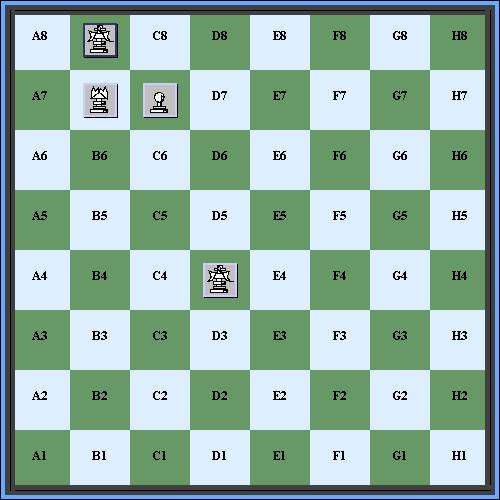
Now Black has to consider more possibilities: the queen could move or strike anywhere he might try to hide, and the pawn blocks his path and could move to B8 or C8. Black could stay still, or move to A8, A7, C8, or B7 or C7 (hoping for ships that pass in the night). White could adopt a containment strategy, leaving her pieces where they stand and striking C8 or A7. If, during such a round, Black's king were to move unexpectedly to A8, White could close the noose on the next round with C7 -> B8; S: B7 -> A7: But even then, White could not absolutely FORCE the win since Black could do nothing and remain at A8. 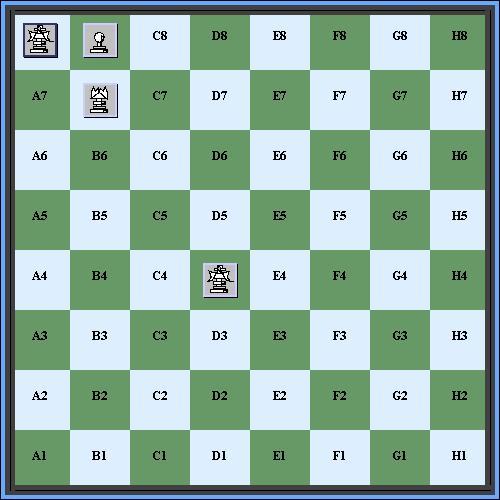
Realistically, White could leave his pieces at B7 and B8 and strike A7 for multiple rounds (which Black could survive by standing still), then choose a round at random to strike A8. Black would have to choose the same round to make his run for A7. So, White might have weighed at an earlier round that Black would be unlikely to move to A8. Or, Black might have moved to A8, knowing it was an unlikely choice. The moral of the story is that an opponent's lone king can be hard to corral with just a couple of pieces, but even then the odds are that you'll eventually catch him. There are other configurations that would seem to leave no doubt, but even here Black could possibly escape: 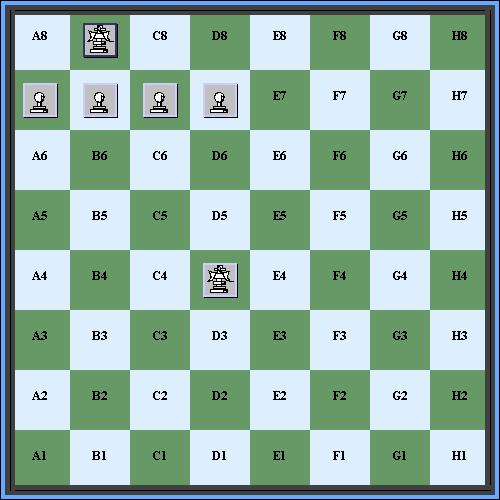
White plays D7 -> C8. Suppose Black's king has moved to A8. Then C8 -> B8 on the next round, then (presuming Black is still alive, his king hiding on A8) on some random subsequent round A7 -> A8; C7 -> B6. But Black could possibly guess the right moment to run for A7, etc. Let's remove ALL doubt: 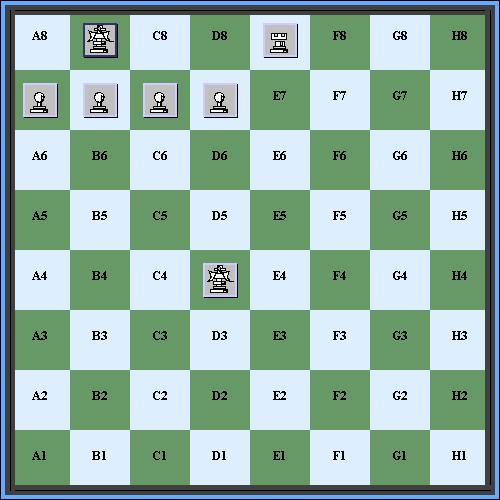
Now, White can march his rook to D8 striking C8. Then, to C8 striking B8. Then, to B8 striking A8. (Alternately, he could have marched forward and struck the trail behind him.) There ARE absolute kills, but Rozz endgames aren't typically of such a theoretical nature. Mostly, winning technique is to overwhelm your opponent. In practice the chance of surviving a particular round, surrounded by wolves, is far greater than the chance of surviving multiple rounds.
We hope you enjoy Rozz Chess as a diversion from the usual scenarios. Besides the android game or website at playrozz.com, the nice thing is that you can play this scenario on a normal chess board.
For those who haven't tried it over-the-board, simply provide each player with a pencil and pad of paper. You write down your two commands, then put your pencil down to show that you're ready. When you're both ready, reveal your commands and play them out. You can also play the "honor system" without pads. Whoever has his/her commands in mind first says "ready," then shows them after the opponent plays his commands on the board. |